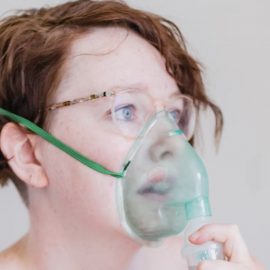

This article is an excerpt from the Shortform summary of "Brain On Fire" by Susannah Cahalan. Shortform has the world's best summaries of books you should be reading.
Like this article? Sign up for a free trial here .
What are the options for autoimmune encephalitis treatment? Is it possible to reverse the disease?
Autoimmune encephalitis treatment is challenging because the cause of the condition is unclear. When Susannah Cahalan had a confirmed diagnosis, doctors put her on an aggressive treatment plan for autoimmune encephalitis.
Read more about autoimmune encephalitis treatment and how it worked for Susannah.
Options for Autoimmune Encephalitis Treatment
While there are treatments that can reverse the course of the disease, full recovery is not assured. 75 percent of patients fully recover or maintain mild side effects; 20 percent remain permanently disabled; 4 percent die even with a swift diagnosis. “Mild” side effects could impair Susannah’s sense of humor, vitality, and drive, but Dr. Najjar believes she can retrieve as much as 90 percent of her former self with the right autoimmune encephalitis treatment.
Dr. Russo explains that Susannah’s disease is frequently instigated by a tumor. If Russo finds any links to Susannah’s earlier bout with melanoma, the team will move on to chemotherapy. At the word “chemotherapy,” Susannah starts to sob.
Being diagnosed with a rare disease changes Susannah’s status in the ward. Doctors, interns, and residents invade her room to discuss her condition. One young intern speaks as if Susannah isn’t present, telling the group that Susannah’s ovaries may have to be removed.
Susannah begins to cry. Her dad bolts to his feet. “Get the fuck out of this room,” he rages at the intern. He reassures Susannah the intern has no idea what he’s talking about.
Susannah is checked for tumors; she has none. Najjar decides to put her on an aggressive autoimmune encephalitis treatment plan—her condition is too precarious to allow it to worsen. If his decision is wrong, Susannah might never recover, but she’s too close to the edge to do otherwise.
With anti-NMDA-receptor autoimmune encephalitis, antibodies can persist months after the disease has run its course. Recovery is often halting, with a 4 percent chance of mortality.
Going Home
After twenty-eight days in the hospital and after undergoing autoimmune encephalitis treatment, Susannah is discharged. She’ll need an at-home nurse; biweekly visits to the hospital to flush out the antibodies with a plasma exchange; a full-body 3-D scan; and full-time rehab. It might not be enough to retrieve Susannah’s former self, but they have a plan, and Susannah’s going home.
On the way back to her mom’s house in Summit, New Jersey, Susannah bops her head out of rhythm to her favorite karaoke song. She swings her elbows front to back, her arms at rigid angles. It’s impossible to tell whether she’s dancing or having a seizure. When they pull into the driveway, Susannah stares straight ahead, making constant chewing motions with her mouth. Even later, she will not recall this moment of homecoming.
Nevertheless, Susannah insists on showering and dressing herself, determined to be on her own. Later that night, she has a psychotic episode. Susannah’s mom relays the incident to Dr. Arslan, who becomes concerned about the reappearance of psychosis and puts Susannah on an extra dose of drugs.
Medical Aside
Dr. Arslan did not know that psychosis was actually a sign of recovery.
At the time of Susannah’s illness, doctors were unaware that the stages of recovery progress in reverse order. Susannah had become psychotic before she became catatonic, so progressing from catatonia back through psychosis was actually a sign that Susannah was improving.
Two years after Susannah’s illness, Dr. Dalmau publishes a paper addressing this facet of the disease.
Ongoing Autoimmune Encephalitis Treatment After Discharge
Two weeks after her discharge, Susannah returns to NYU for her weeklong plasma exchange. The plasma is injected through a catheter placed directly into Susannah’s jugular vein. It has to stay in place all week, held in place by tape.
Stephen picks her up at the end of the week. On the drive back to Summit, he turns on the radio and begins to sing along. Susannah joins him on the chorus, belting out, “California Dreamin; on such a winter’s day!” Stephen watches her with joy. After weeks and weeks of waiting, he can see that Susannah is still in there.

———End of Preview———
Like what you just read? Read the rest of the world's best summary of Susannah Cahalan's "Brain On Fire" at Shortform .
Here's what you'll find in our full Brain On Fire summary :
- How a high-functioning reporter became virtually disabled within a matter of weeks
- How the author Cahalan recovered through a lengthy process and pieced together what happened to her
- How Cahalan's sickness reveals the many failures of the US healthcare system






